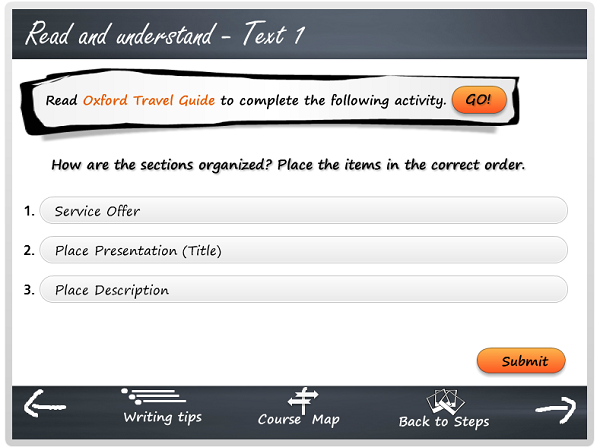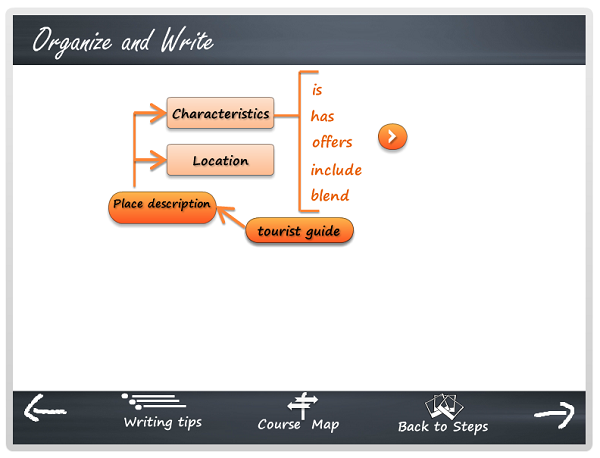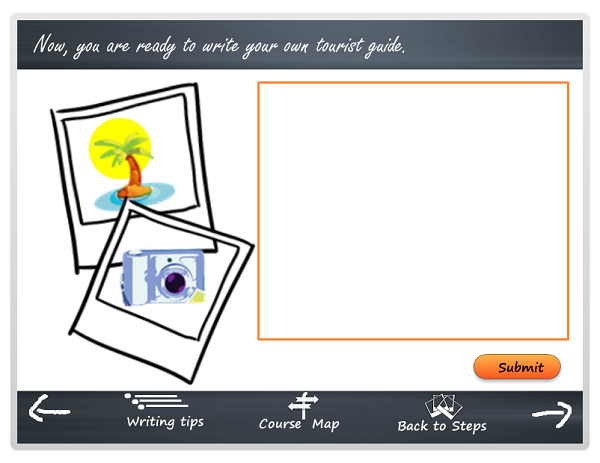ATD Blog
Applying Second Language Learning Strategies to E-Learning Design
Fri Aug 07 2015

Some years ago, I completed an M.A. in applied linguistics. My dissertation was entitled “Linguistic Modeling of Online Tourist Guides and Computer-based Applications.” My goal was to identify the general organization and the most common linguistic patterns of this genre in order to design varied activities that could guide English as a Second Language (ESL) leaners through the complex process of writing.
My thesis was divided into two sections. The first section set the theoretical background through a comprehensive linguistic analysis and a revision of relevant research findings in the field of second language acquisition. The second part was aimed at illustrating how to apply theory and research-based strategies to develop an ESL e-learning application.
The pedagogical approach and some linguistic principles presented in my work are mainly targeted at ESL programs. However, in this post, I would like to take a broader perspective and draw your attention to four learning strategies that can be applied to e-learning design. I will use as a reference the outstanding work by Professor Emerita and Distinguished Scholar, Rebecca Oxford. Oxford´s theoretical insights are based on more than two decades of research in the fields of applied linguistics and second language learning strategies.
Cognitive Strategies
Cognitive strategies foster direct manipulation of content (Oxford, 2003). We can ask learners to apply reasoning and analytical skills to:
take notes
summarize
synthesize
outline
reorganize new information.
This type of activities helps learners develop their own knowledge structures. In the ESL e-learning application, learners analyze a text in order to determine how the sections are organized.

Also, learners can establish relationships among concepts and make associations through an interactive mind map.

Metacognitive Strategies
These strategies enable the learner to manage their own learning process and that implies monitoring mistakes and evaluating task success (Oxford, 2003).
The example below illustrates a self-evaluation system that is a common feature in e-learning courses. In this application, the feedback always focus on:
what the learners need or want to know at a specific moment
what their main goal is
what information will help them toward that goal.

Memory-Related Strategies
Some researchers maintain that these strategies are very useful during the first stages of the second language acquisition process. However, learners should avoid them in later stages since rote repetition and memorization could prevent them from using the new language in a more creative way.
Some of these strategies can help learners acquire and retrieve information in an orderly string, while other techniques create learning and retrieval through sensory stimuli such as a sound, and image or a combination of both. Mechanical means such as the use of flashcards also can be considered as memorization strategies (Oxford, 2003).
How did I apply these strategies to the ESL e-learning application?
I created a series of activities that enable the learners to observe how the language is structured to convey meaning. Learners analyze the sentence elements, their location and their relationships with other elements. Then, they can experiment with those patterns to progressively build new sentences.

How can you apply memory-related strategies to your projects?
Think about patterns and processes that learners need to acquire. Ask them to identify the sequence, the organization and the relationships among elements. Then, allow learners to try different combinations and evaluate the outcomes.

Social Strategies
Social strategies such as asking questions to get verification, clarification of a confusing point, or help in doing a language task (Oxford, 2003), allow learners to test their use of the language by interacting with others.
For instance, after completing a series of activities to practice the textual organization and the sentence patterns, students can submit their first draft of a tourist guide. In a blended learning environment, a teacher or an instructor can provide feedback for improvement.

Research-based learning strategies as the ones presented in this post can better orient the design of e-learning applications by helping us create a sequence of activities that systematically guide the students through a complex task.
One final note: This ESL e-learning application was built with Articulate Storyline v1. Learn more about it here.
Further Reading
Oxford, R. (1990). Language Learning Strategies. What Every Teacher Should Know. Oxford, Harper Collins.
Oxford, R. (2003) Language learning styles and strategies. Paper presented at GALA 13th International Conference on "New Directions in Applied Linguistics."
Villar, M. (2012) Modelización contextual y lingüística de los folletos de promoción turística en inglés y aplicaciones pedagógicas informatizadas. Master´s thesis. Universidad Nacional de Cuyo, Mendoza, Argentina.
You've Reached ATD Member-only Content
Become an ATD member to continue
Already a member?Sign In
